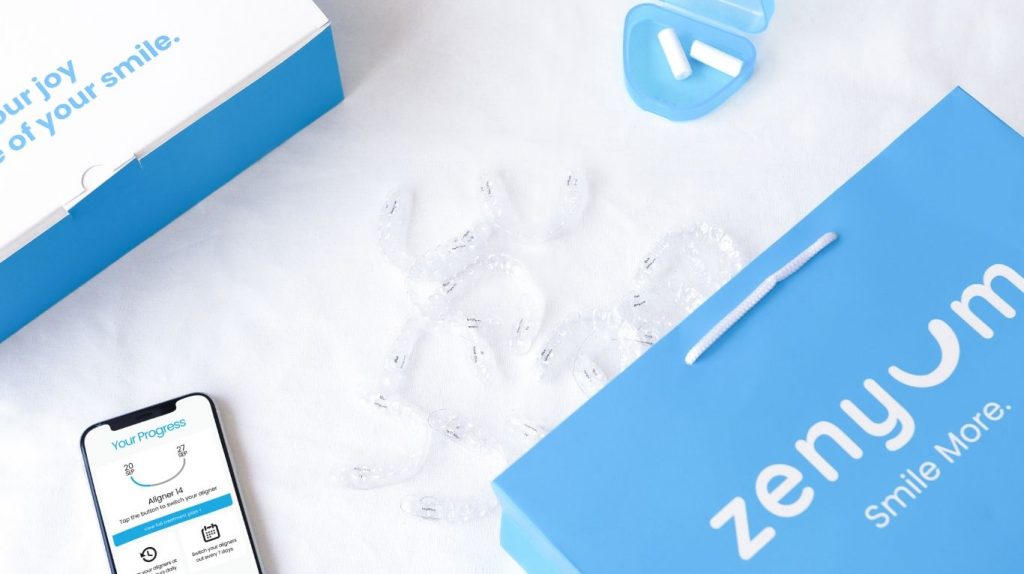If you had it your way, your teeth would line up as neatly as the keys on a piano.
But because of various reasons, with varying degrees of
- It’s your fault because you ‘forgot’ to wear your retainers, or
- You were screwed over in the dental genes department…
You are stuck with crooked teeth that make you feel more and more self-conscious every time you smile in selfies.
It’s embarrassing.
But you know what’s even more embarrassing? The state of dentistry, especially orthodontics which until now has proven to be a very traditional industry resistant to change.
To be clear, we believe licensed dentists and orthodontists should NEVER be taken out of any dental treatments. The high level of professionalism, accountability and experience they bring to the table simply cannot be taken for granted.
But that doesn’t mean straightening your teeth is a straightforward experience with no room for improvement. The good news is things have finally started changing over the last few years.
Adult braces can be embarrassing and painful
Having braces is no walk in the park.
Braces pop loose; wires draw blood.
Oh, and all that time spent brushing and checking in with your orthodontist – not fun.
With costs averaging HKD30,000 to HKD90,000, your savings can take a significant hit from braces, too. That’s depressing.
Does this then mean that you should bid a tearful adieu to your dream of a perfectly straight smile?
Thankfully, no.
Along came invisible braces

Meet ‘invisible braces,’ AKA ‘clear aligners.’ Thank Zia Chishti, the founder of Align Technology, for this genius invention.
When given a retainer intended to complete his orthodontic treatment, Chishti thought that a series of such clear aligners could, in theory, shift teeth in a series of small movements.
He was right. And the first ‘invisible braces’ sold in 1999.
These do the same thing as traditional metal braces–slowly applying pressure to adjust teeth to straighten them–except they’re made of plastic, clear, and are removable.
Because you can take them off to eat, you no longer need to steer clear of your favourite sticky caramel popcorn at the cinemas. What’s more, because they’re made of plastic, you’ll never cut the inside of your cheek from a sharp metal bracket.
Best part?
No one will be able to tell that you’re wearing them (unless, they’re standing really close to you of course).
Invisible braces were still out of sight for many
Unfortunately, here’s where the benefits end.
While the first invisible braces did offer a way to correct teeth in a more discreet way, it didn’t exactly provide convenience, nor affordability.
You’d still have to carve out time from your busy schedule for monthly in-person check ups. That’s because, according to the design of the treatment process of most leading invisible braces providers, your orthodontist has no other, time-saving, feasible way to monitor the shifting of your teeth.
And that drives up treatment costs. Significantly; with the average priced at HKD20,000 to HKD60,000.
Ouch.
So for 15 long years, those with a crooked smile who didn’t have the time or money to fix their teeth, could only half-grin and bear with it.
D2C players came out to play
Until D2C players shook up the teeth-straightening industry in 2014, by cutting out the steps of going in-person to a dentist or orthodontist to get braces or other alignments.
These industry disruptors offer a teledentistry business model.
For those unaware, teledentistry refers to the use of technology for remote dental care; it’s basically a subset of telemedicine.
For many of these D2C teeth-straightening solution providers, the process starts with an at-home impression kit (typically sent via mail), followed up with an evaluation.

Potential customers follow step-by-step instructions to take moulds of their own teeth. Some companies also set up physical outlets to facilitate the mould-taking or 3D intraoral scan, which is similar to what is done in a dentist’s office for traditional invisible aligner treatment.
These moulds are then submitted along with photos of their teeth using the same angles a dentist or orthodontist would capture in-office.
A licensed dentist or orthodontist then evaluates the submissions (i.e. both photos and impressions) to determine if the individual is a suitable candidate for remote therapy.
If so, they’ll create a treatment plan, manufacture, and then ship the invisible braces back to the customers, who typically undergo treatment over a five- to 10-month period. This is purportedly 30% faster than traditional, invisible aligners.
Faster, and more convenient; but is it also cheaper?
Yes. Because monthly visits to brick-and-mortar dental clinics are no longer part of the equation, the treatment prices are significantly lower than traditional orthodontic care–HKD14,500 versus HKD30,000 to HKD90,000 for metal braces.
The technologies behind D2C dental services
Understandably, you may now be wondering, “What’s made the industry shift possible? Why are these D2C players able to offer their teeth-straightening solutions at such budget-friendly prices?”
Well, it’s really because of two specific, relatively-new technologies: 3D intraoral scanning and 3D printing.

3D Intraoral Scanning
For D2C players that support intraoral scanning (instead of DIY impression kits), the process starts with the patient’s teeth being scanned by a dentist or orthodontist, who then uses software to generate a 3D model of their teeth.
Not only is intraoral scanning more comfortable for patients, it’s also faster and allows for a more accurate 3D model of teeth. The models are used to, well, model the aligners, which are then printed.
3D Printing
Whether a D2C aligner company makes use of intraoral scanning or not, they’re sure to incorporate dental 3D printing in their business model.
The primary benefit of using 3D printing to produce aligners is speed–it takes just hours to manufacture a full batch. Also, the technology makes it possible for better-fitting clear aligners, as they’re created from precise scans of a patient’s teeth.
When combined, these two technologies significantly cut down on treatment time and resources, which then translate into savings for consumers.
Taking the pain out of a painful process
If D2C dental care players have anything in common, it’s this.
They are ridiculously good at making the entire teeth-straightening process painless (and not just physically, either).
The trifecta of pain points they’re taking aim at?
- It’s challenging to schedule appointments – Not anymore with innovative technology, that enables round-the-clock communication with a professional (5-star customer service).
- Traditional metal braces are painful to look at (and wear) – Invisible braces made of medical-grade plastic are not only clear but removable as well.
- Incumbent invisible braces providers are too expensive – Many D2C clear aligners are priced around HKD17,000, making teeth-straightening accessible for many.
Mild to moderate is the new underserved
That said, it’s crucial to note that these D2C players are not attempting to fix all crooked smiles.
Instead, they’re targeting individuals with ‘mild to moderate’ cases – a segment that’s remarkably under-served by traditional braces and expensive invisible aligner solutions.
Customers whose dental needs prove to be too complex, including severe overcrowding, over- and underbites, large gaps, and irregular tooth shapes, are not eligible for treatment.
Stigma is out. Good vibes are in.
Regardless, these D2C invisible aligners are a relief for those who’ve struggled with crooked teeth.
In replacement of traditional fear-based marketing messages we’ve come to expect from dental companies, these young start-ups are highly focused on lessening the stigma around crooked teeth through fun, positive, and educational marketing campaigns.
The formula has been a hit with consumers all-too-familiar with the stigma associated with metal braces, but wanted an invisible braces solution that didn’t break the bank.
More disruption in oral care? Erm… yes please
If these companies’ expansion into complementary dental products, like professional at-home teeth-whitening solutions from Zenyum (ZenyumBright™), is anything to go by, more disruption of the oral care industry is expected.
This period is reminiscent of that when Pepsodent disrupted the toothpaste industry.
You may be surprised, but for the longest time, people were about as interested in brushing their teeth as your average three-year-old – until Pepsodent entered the market, that is.
With its innovative formula–which rewards brushers with a refreshing, tingling sensation and unorthodox marketing campaign, Pepsodent created a daily teeth-brushing habit where there was none.
- Dentists were happy with the improving oral hygiene standards.
- Brands were happy to devour a fresh, new market up for grabs.
- People were happy with the new tingles in their mouths.
Times were good. Similarly, D2C oral care players today are finding new ways to encourage us to adopt new oral care habits that go beyond a tingly mouth.
And that’s something we can all smile about. 😁
We can’t wait to see what new oral care rituals we’ll come to accept as part and parcel of our daily lives.




